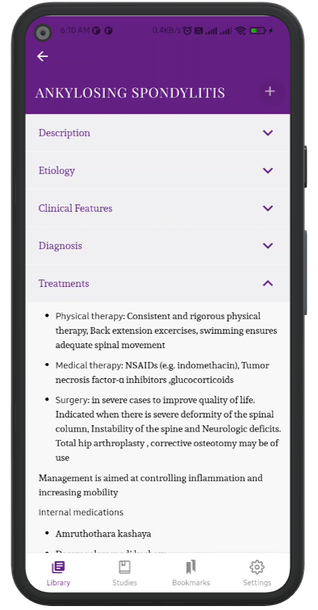CHRONIC OBSTRUCTIVE PULMONARY DISEASE
Description
- Chronic obstructive pulmonary disease (COPD) is a lung disease characterized by persistent respiratory symptoms and airflow limitation that is due to airway and/ or alveolar abnormalities usually caused by significant exposure to noxious particles or gases
- COPD begins with chronic airway inflammation that usually progresses to emphysema, a condition that is characterized by irreversible bronchial narrowing and alveolar hyperinflation. These changes cause a loss of diffusion area, which can lead to inadequate oxygen absorption and CO2 release, resulting in hypoxia and hypercapnia
- Most affected individuals present with a combination of dyspnoea and chronic cough with expectoration. In later stages, COPD may manifest with more severe symptoms such as tachypnea, tachycardia, and cyanosis
Types
- Chronic and progressive dyspnoea are the most characteristic symptom of COPD
- Chronic cough may be productive or non productive
- Cough is usually associated with small quantities of tenacious sputum
- Dyspnoea , a cardinal symptom of COPD is a major cause of the disability and anxiety that is associated with the disease
- Wheezing and chest tightness may occur intermittently
- Fatigue, weight loss and anorexia are common
- Pursed lip breathing: The patient breathes in through the nose and breathes out slowly through pursed lips. This style of breathing increases airway pressure and prevents bronchial collapse during the last phase of expiration. It is more commonly seen in patients with emphysema
- Cyanosis due to hypoxemia
- Tachycardia
- Auscultation: Prolonged expiratory phase, end-expiratory wheezing, crackles, muffled breath sounds, and/or coarse rhonchi
- Symptoms are minimal or nonspecific until the disease reaches an advanced stage
Advanced COPD
- Barrel chest is seen in patients with emphysema
- Congested neck veins
- Asynchronous movement of the chest and abdomen during respiration
- Use of accessory respiratory muscles due to diaphragmatic dysfunction
- Peripheral oedema (most often ankle oedema)
- Right ventricular hypertrophy with signs of right heart failure and cor pulmonale
- Hepatomegaly
- Weight loss and cachexia
- Confusion due to hypoxemia and hypercapnia
- Nail clubbing in the case of certain comorbidities (e.g. bronchiectasis, pulmonary fibrosis, lung cancer)
- Percussion: Hyper resonant lungs, reduced diaphragmatic excursion, and relative cardiac dullness
- Auscultation: Decreased breath sounds: silent lung
According to the clinical appearance, patients with COPD are often categorized as either Pink Puffer (Mild cough, Non cyanotic, cachectic, pursed lip breathing) or Blue Bloater (Productive cough, Peripheral oedema)
Investigation
Spirometry
- FEV1/FVC < 70%
- Decreased FEV1
- Normal or decreased FVC
- Increased FRC and RV
Postbronchodilator test
- Delta FEV1 < 12% (irreversible broncho constriction)- COPD is more likely than asthma.
Pulse oximetry: assesses O2 saturation
Blood gas analysis:
- Only indicated when O2 is < 92% or if the patient is severely ill
- Decreased pO2: partial respiratory failure
- Decreased pO2 and increased pCO2: global respiratory failure
Chest X-Ray
- used to determine the etiology for an acute COPD exacerbation (e.g. pneumonia, congestive heart failure)
- Barrel chest – signs of hyper inflated lungs
- Hyperlucency of lung tissue (decreased lung markings)
- Horizontal ribs and widened intercostal spaces
- Long narrow heart shadow
- Parenchymal bullae or subpleural blebs (pathognomonic of emphysema)
- The retrosternal space is increased on lateral view due to emphysematous changes in the lung tissue
- Increased anterio posterior diameter
- Diaphragm pushed down and flattened
Chest CT
- To evaluate possible complications (e.g. pneumothorax, ARDS)
CBC
- Increased serum haematocrit
Sputum Evaluation
- Sputum mucoid with macrophages as the predominant cells
ECG
- may show signs of right ventricular hypertrophy
Treatments
- Cessation of tobacco use
- Improve functional status and quality of life
- Preventing Exacerbations
- Lung transplantation – significantly improve lung function and decrease mortality
Internal Medicines
- Dashamoola katutraya kashaya
- Nayopayam kashaya
- Vyaghradi kashaya
- Svasananda rasa
- Dhanwantara gutika
- Kasthuryadi gutika
- Dashamoolarishta
- Kanakasava + Vasarishta
- Dashamoola rasayana
- Kooshmanda rasayana
- Indukanta Ghrita
Procedures
- Pranayama
- Karpooradi taila - external application on chest
- Busa pinda sweda
Department
Kayachikitsa

